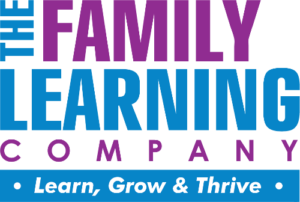Family Literacy and Corporations
ROI
If somebody offered you a proven productivity improvement approach that generated an ROI of greater than 100% a year, would you be interested? Well, here’s the ROI achieved by companies in three industries from helping their employees improve their reading and writing skills:

According to smallbusiness.chron.com, the large number of people at or below basic literacy skill levels costs United States businesses and society at least $225 billion annually. Workers who cannot read and interpret basic signs and instructions compromise safety, slow production and cause errors that affect profits, customer satisfaction, and compliance with laws and regulatory requirements.
The same low reading levels also affect the ability of workers to communicate with each other and to function as effective teams.
Retention
By building the reading and writing skills of their employees, and potential employees, companies build productivity, safety, profitability, and most important: loyalty. The gift of literacy is invaluable – it changes the lives of the adults who achieve it, their children, their families and their communities. In return, employees give greater loyalty to their employers: win-win.
Corporations
For corporations grappling with functionally illiterate employees, prioritizing literacy and family engagement is imperative. Addressing adult literacy gaps involves strengthening phonemic awareness, phonics, and reading comprehension. Encouraging family engagement initiatives supports employees' literacy development, fostering a conducive learning environment beyond the workplace. Implementing family learning software or Interactive Family Literacy programs aids in enhancing reading skills among employees and their families. By empowering multi-generational learning, companies can bridge literacy gaps, positively impacting productivity and communication skills. Promoting these initiatives not only mitigates workplace illiteracy but also uplifts employees, nurturing a more proficient, engaged, and empowered workforce.
Literacy Development in the Corporate Environment
As Donna Geiss prepared her presentation, she thought about the benefits her company had received from getting involved in employee literacy: higher retention rates, higher levels of job satisfaction on the surveys, lower levels of stress reported by employees, higher rates of internal promotion, and the recent press about helping their community. These would be the feature benefits in her presentation.
What were the costs? Of course, the family plan license cost; but, that was minor compared to most benefits. It had felt like a risk to get involved in yet another issue. Her HR department had plenty to do, especially with the pandemic still active. But getting involved in helping employees with their families had gone over so well. Hard to see it as a risk anymore.
Why had it worked? It started as a children’s aid program: help your kids make up for pandemic learning loss through family learning software. There had been some pushback – some parents said that they, “didn’t want another job.” Non-parents didn’t see what was in it for them. It wasn’t until some of the parents tried it with their kids that they saw the potential benefits from the adult literacy program for themselves. It look even longer for the word to get out that employees were using the software themselves, and that it helped them at work. It went over the hump when her department set up some tablets in the cafeteria to try the software on work time. Amazing what people will do to avoid their own jobs – but, it worked – now they’re hooked…
Where does it go from here? Once everybody is reading at an eighth grade level, job training programs will fill up. Management training programs are likely to see an influx. Hopefully, people will use their analytical reading and writing skills to improve company processes. Could they replace some of the training videos with text? Maybe.
What would we do with a truly educated workforce? Donna could hardly wait to find out.
Family Literacy and Corporations
ROI
If somebody offered you a proven productivity improvement approach that generated an ROI of greater than 100% a year, would you be interested? Well, here’s the ROI achieved by companies in three industries from helping their employees improve their reading and writing skills:

According to smallbusiness.chron.com, the large number of people at or below basic literacy skill levels costs United States businesses and society at least $225 billion annually. Workers who cannot read and interpret basic signs and instructions compromise safety, slow production and cause errors that affect profits, customer satisfaction, and compliance with laws and regulatory requirements.
The same low reading levels also affect the ability of workers to communicate with each other and to function as effective teams.
Retention
By building the reading and writing skills of their employees, and potential employees, companies build productivity, safety, profitability, and most important: loyalty. The gift of literacy is invaluable – it changes the lives of the adults who achieve it, their children, their families and their communities. In return, employees give greater loyalty to their employers: win-win.
REQUEST A CONVERSATION OR WEB DEMO
Request a Conversation or Web Demo today to see how The Family Learning Company’s products can help your employees.

